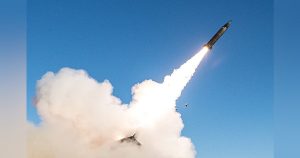NASA Seeks Industry Partnership for Fission Power System on Moon and Mars Missions
NASA has extended an invitation to the international space community to collaborate on the development of an advanced fission power system, aiming for its deployment by 2030. This initiative is set to transform extraterrestrial exploration by ensuring a steady supply of electrical power in the demanding conditions of the Moon and Mars.
The Rationale for Fission Power Systems
The challenges of powering missions on the Moon and Mars are significant. Solar panels, which supply clean energy on Earth, fall short in these environments. The Moon experiences night phases lasting over 14 Earth days, and its poles receive little to no sunlight. Mars, despite having more sunlight than the Moon, has its solar energy potential reduced by dust storms and extended winters.
Nuclear fission presents a viable solution by splitting atoms to generate heat and electricity. Reactor physicist Nick Touran notes, “Massive power can be obtained from minimal mass,” a critical factor given the weight constraints of space missions. A fragment of Uranium-235, about the size of a softball, could equate to the energy produced by an entire train loaded with coal.
NASA’s Industry Request
NASA’s new Request for Information (RFI) invites proposals for a Fission Surface Power (FSP) system that should:
- Generate at least 100 kilowatts of electricity, sufficient for a small Earth community.
- Have a mass under 15 metric tons.
- Utilize a closed Brayton cycle power conversion, efficiently turning nuclear heat into electricity.
- Operate continuously under any circumstance—lunar nights, Martian dust, or absence of sunlight.
- Integrate with human-rated landers, rovers, and habitats for future missions.
NASA seeks partnerships that can manage the system’s complete lifecycle: development, testing, transportation, launch, deployment, and autonomous operation on planetary surfaces. The agency is open to feedback regarding the necessary provisions for achieving the 2030 target, including materials, facilities, technical expertise, and the identification of potential risks in technical, regulatory, and supply chain aspects. Submissions are due by August 21, 2025.
Impacts on Space Exploration
Imagine an operational lunar base powered by reliable nuclear energy, capable of sustaining permanent human habitation, scientific research, or lunar mining activities. On Mars, a base could function unaffected by the harsh planetary conditions, making self-sustaining settlements a tangible vision.
Steve Sinacore, Fission Surface Power program executive, explains, “Developing a safe, reliable power supply is essential to the future of human space exploration and maintaining America’s leadership in space.” Historic missions like New Horizons, which passed by Pluto using a mere 200 watts, demonstrate how increased power could enhance capabilities, from high-definition data transmission to expanded scientific work.
NASA’s Nuclear Experience
NASA is no stranger to nuclear power. The SNAP-10A launched in 1965 marked the first nuclear reactor in space. Various missions, including Voyager, Curiosity, and Perseverance, utilized radioisotope thermoelectric generators (RTGs). Promising results from the Kilopower project in small-reactor technology have paved the way for larger systems fit for the Moon and Mars environments.
Technological Innovations
The core of NASA’s system is the closed Brayton cycle, converting nuclear core heat into electrical power via a turbine mechanism. The design prioritizes compactness, lightweight, modularity, and autonomous safety, making it adaptable for modern launch vehicles.
Facing Challenges and Inviting Industry
The path ahead centers around overcoming technical and regulatory hurdles, especially in nuclear safety, space qualification, and regulated supply chains. NASA encourages the industry to help tackle these challenges and push forward innovation for long-term operation of these systems.
Artemis and Moon to Mars Programs
This fission surface power initiative is a critical element of the Artemis program, which aims to establish a permanent lunar outpost, a precursor for Mars missions. Robust power capabilities will support astronaut activities, rover expeditions, mining ventures, and research demanding stable conditions.
Opportunity for Space Industry
For the private sector, this collaboration offers an entry into the nascent lunar and Mars economies. The technologies developed may advance space power networks, Earth’s microreactors, and commercial mining or energy projects. Today marks a crucial milestone in integrating commercial expertise into powering lunar economies and facilitating Mars exploration, as highlighted by Sinacore.
Final Thoughts
With NASA inviting innovative solutions, the space industry is poised at the frontier of human exploration. The Moon and Mars represent new realms for growth, with power being the cornerstone for humanity’s future beyond Earth. NASA’s invitation extends beyond ideas to partnerships that will pioneer light across other worlds and uphold humanity’s exploratory legacy.













